Patrik Bindea
Patrik Bindea is a growth hacking marketer and the owner of strodin, where he helps dentists get more patients. He obsessively tests everything until he finds those details that turn strategies, concepts and words into sales.
If you're hoping to increase sales, you're on the right track. Read how ro increase sales dramatically by using this psychological principles.
Have you ever met someone or read a message and they are instantly engaging, trustworthy and convincing? You just feel you like that person, you feel a connection with them and you feel that they can help you.
Even if it’s just a blog article, a short Facebook post or any other kind of interaction with that person. You probably think they were born charming or at least well-practiced in the gift of gab or the skill of the persuasive pen.
Must Read: How to Create the Perfect Social Media Post
Not so. It's easy. And if you want to learn how you can do it too, below you’ll find Dr. Cialdini’s famous 6 persuasion principles.
These principles are so powerful because they rely on our brains’ subconscious decision-making shortcuts. So basically, they work even if someone is aware that you are using these persuasion tactics on them.
If you are an Internet marketer or a business owner, this is The Persuasion Bible. If you want to increase sales, you cannot do it without applying these principles.
If you want to build a brand or an engaged community, you must read these.
If you have a blog or a website and you want to turn visitors into paying customers, you have to use some of these nifty little tricks.
These principles can be applied to just about anything:
Or even convince your kids to go to bed.
Below you’ll find not only how each persuasion principle works, but you’ll also have some concrete real-life examples you can copy and adapt for your business.
But there’s something more.
If you already know Cialdini’s principles or if you’ve already read a bit about persuasion, you might say: “Oh, come on, these principles are all around the Internet!”.
And you’d be damn right.
But what you won’t find in all those articles are concrete examples of how you can use them in different situations.
This is why in this article, we’ll go through specific examples for different types of situations and different types of formats:
So, if you want to exert a powerful influence on other people - from customers to friends or boyfriends/girlfriends - and never hear the word “no” again, these principles will definitely give you an edge over your competitors.
But first …
Before getting into the principles, you really need to know something about fireflies.
In his book, Influence, Dr. Robert Cialdini tells about the deadly trick played by the killer females of one genus of firefly (Photuris) on the males of another firefly genus (Photinus).
Through centuries of experience, the female hunters have located a weakness in their prey — a special blinking courtship code by which members of the victims’ species tell one another they are ready to mate.
Copyright © 1997 by Thomas Eisner
A female Photuris firefly devours a male Photinus to obtain defensive compounds called lucibufagins.
Somehow, the Photuris female has cracked the Photinus courtship code.
By mimicking the flashing mating signals of her prey, the murderess is able to feast on the bodies of males whose triggered courtship tapes cause them to fly mechanically into death’s, not love’s, embrace.
Well, we like to think about ourselves as rational human beings. But in fact, we’re so predictably irrational.
Cialdini found that we, too, have certain triggers that activate certain automatic behaviors. These automatic tapes usually develop from psychological principles or stereotypes we have learned to accept.
Although they vary in their force, some of these principles possess a tremendous ability to direct human action.
We have been subjected to them from such an early point in our lives, and they have moved us about so pervasively since then that you and I rarely perceive their power.
Basically, these principles hijack our rational behavior, and you can use them to influence people to buy more. So, now that you understand what these principles are and why they are so powerful, let’s dive right into the first one.
In his book, dr. Cialdini talks about a university professor who tried a little experiment.
He sent Christmas cards to a sample of perfect strangers.
Although he expected some reaction, the response he received was amazing—holiday cards addressed to him came pouring back from the people who had never met nor heard of him. The great majority of those who returned a card never inquired into the identity of the unknown professor.
So, the principle says that we try to repay what another person has provided us.
The noted archaeologist Richard Leakey concluded that the reciprocity system is the essence of what makes us human:
“We are human because our ancestors learned to share their food and their skills in an honored network of obligation.”
Well, this principle can take many forms. Basically, you apply this principle every time you help people out.
Here’s a couple of examples:
Let’s say you’re a coach, and you write an article on how to be more productive. You can offer a free productivity cheat sheet people can use to track their progress.
Or look at a well-known example: Gary Vaynerchuk. He built a multi-million dollar company and became one of the best-known marketers in the world simply by helping people through his content.
The bottom line is very simple: people make a connection with you if you truly help them.
The worst thing at a networking event is people coming to you and trying either to “sell” you all sorts of things. You rarely find someone who comes to you and genuinely tries to help you.
So this is your opportunity. Instead of talking about yourself and how great your business is, try to be helpful to the other person.
Let’s say you’re Bob, a Social Media Consultant, and you’re at a networking event. Here are 2 scenarios:
| The douchey, salesy version | The helpful, human version |
| - Hey there, I’m Bob; I don’t think I’ve met you yet.
- Hey, I’m John, nice to meet you! - Nice to meet you, too! What brings you here? - Well, my wife and I just started an online store where we sell kids stores, and we wanted to learn more about how to grow an online business. You? - Well, I’m a social media consultant. We help business owners grow their businesses using social media. Here’s my business card; if you need some help, we offer a discount for those who attended this event.
|
- Hey there, I’m Bob; I don’t think I’ve met you yet.
- Hey, I’m John, nice to meet you! - Nice to meet you, too! What brings you here? - Well, me and my wife just started an online store where we sell kids stores, and we wanted to learn more about how we can grow an online business - Cool! What have you tried so far and didn’t work (or worked)? - Well, we tried growing our audience pretty much organically on Facebook, but things are going pretty slow… - Yup, true, because of the algorithm… Have you tried directly targeting moms and then retargeting them with some discounts? Maybe it would work? - Targeting moms? Can you do this on Facebook? And retargeting, what’s that? - Well, yeah! You can specifically show an ad or some content to moms who have kids ages between X and Y if you go to Facebook Ads Manager and click on… - Oh! Thank you very much, I didn’t know that. Are you a marketer or a Facebook expert? - Yeah, I help business owners bla bla bla |
See how the second conversation is so much different?
We’ve built a connection with the person by trying to help him. It isn’t just: Hey, I’m Bob, I’m a consultant. Do you need me? Ok, pay me, and I’ll help you.
And there’s one more catch….
Since we helped them a little bit, a natural step would be to want more help, right?
This is one of the best ways to get people to “taste” your product or service and automatically and subconsciously make them want more. And, of course, since it’s free, you remove any objection or friction towards them taking the first step.
But this isn’t necessary to be limited to some free trial or free content.
Take Uber’s example.
There was a Boston bus strike in 2013, and Uber provided free bus services to all Boston public schools.

They were not only the hero of the day but also let everyone else know who did it, earning goodwill in their community and beyond through the resulting PR.
Take this rather funny experiment. Someone who will join the group in an elevator will do whatever others do, even if there’s no logic to it.
Quite the contrary, why would you enter an elevator and stare at the walls instead of facing the doors to see when you arrive at your destination?
Simply because, from an evolutionary perspective, we think that we’ll make fewer mistakes if we act in accord with social evidence rather than contrary to it, especially when we don’t have enough information to judge a situation by ourselves.
Here are some scripts and examples you can just copy-paste and adapt them to your business:
Why {significant amount of people} love/try {brand/personality/service}
{significant amount of people} love/tried {brand/personality/service/course} and they overcome the {Unexpected Culprit} That Keep them {Unpleasant Thing}
{significant amount of people} did/tried {solution} and they {desirable outcome}
{Personality} teaches/shows you {solution} and/or {desirable outcome}
Learn to {desirable thing} the same way {notable influencer or personality}
How a {Former customer} tried {solution} to {desirable outcome}
ii. Use badges that show other people already trust you
Let’s say you’re a yoga teacher.
If I wanted to start doing yoga I would find on your website something like: As seen on or Trusted by [introduce well-known publication]… well, you got my attention.
According to Bright Local, Yelp & Facebook are local consumers' most trusted review sites, followed by Google & BBB.org.
So, try to get as many reviews as possible to make more people trust you and finally buy from you.
Remember what I’ve told you earlier? When people are having a hard time making a decision, they rely on others’ decisions.
By simply showing how you helped other people like them, you make your potential customers think: Hey if he helped them, it can help me too.
Why do brands selling automobiles and alcoholic beverages always feature a sexy female model? (Granted that sports automobiles and alcohol advertisements usually target males.)
Dr. Cialdini explains that we are more likely to comply with requests made by people that we like.
That can range from our closest friends to complete strangers that we are attracted to, just like that model posing with that Lamborghini.
That also explains why we are much more likely to purchase something people close to us recommend.
Daniel Kahneman’s Thinking Fast Thinking Slow provides a detailed answer to why liking works.
In short, when we don’t know the answer to a question, we actually answer another question for which we know the answer.
For example, let’s say a CEO invests in Ford stocks. And because he knows nothing about investing, he will do it at the wrong moment.
Why would you do that on earth?
Simply because he subconsciously answers himself to the wrong question.
| The right questions | Wrong question |
| Should I invest in the company?
Do I know anything about investing? Do I have the right people to help me invest right? |
Do I like Ford cars? |
Liking can take many forms. We can like someone for how he or she looks, how it behaves, their character, their charisma etc.
Who doesn’t like people who are funny, right? You can use humor throughout your articles, in your About page, in your Facebook posts etc.
This goes hand in hand with the reciprocity principle we discussed earlier. We like people who help us, and we also tend to turn back the favor.
We tend to like people who are similar to us. So, you can tell people what you believe in any communication channel or message: emails, Facebook, Twitter, website (about page).
Let’s say you’re a fitness trainer. You can attract people who want to lose weight in a sustainable, healthy way by clearly stating that your clients are not those who want to lose weight overnight using some sort of magic potion magically.
If you didn’t hear about the Milgram experiment, you’d be a little bit shocked.
Stanley Milgram, a psychologist at Yale University, conducted an experiment focusing on the conflict between obedience to authority and personal conscience.
The experiment went like this.
One of the participants had the task of learning pairs of words in a long list until each pair could be recalled perfectly; this person was called the Learner.
The other participant’s job was to test the Learner’s memory and to deliver increasingly strong electric shocks for every mistake; this person was designated the Teacher.
The third person in the experiment was the Researcher (the authority figure).
He strapped The Learner into a chair and, with the Teacher looking on, attached electrodes to The Learner’s arm. The Teacher asks the Learner (who was, in fact, an actor) a question. Then, The Teacher checks with The Researcher (who is also an actor) if the answer is correct.
For each wrong answer given by The Learner, The Teacher was instructed by the authority figure (The Researcher) to deliver an electric shock from a box with toggle switches that ranged in 15-volt increments up to 450 volts (no shocks were actually delivered, The Learner was an actor who faked the whole thing).
Now here’s the catch:
In Milgram's original experiments, 65% of subjects went all the way to the end.
In the presence of this authority figure, they had no mercy and were willing to torture another human being.
It has to do, Milgram says, with a deep-seated sense of duty of authority within us all.
According to Milgram, the real culprit in the experiments was his subject’s inability to defy the wishes of the boss of the study—the lab-coated researcher who urged and, if need be, directed the subjects to perform their duties, despite the emotional and physical mayhem they were causing.
The evidence supporting Milgram’s obedience to authority explanation is strong.
First, it is clear that, without the researcher’s directives to continue, the subjects would have ended the experiment quickly. They hated what they were doing and agonized over their victim’s agony. They implored the researcher to let them stop. When he refused, they went on, but in the process, they trembled, they perspired, they shook, they stammered protests and additional pleas for the victim’s release.
Second, Milgram has provided even more convincing evidence for the obedience-to-authority interpretation of his subjects’ behavior.
Here’s the most interesting part.
In a later study, he had the researcher and the victim switch scripts so that the researcher told the Teacher to stop delivering shocks to the victim while the victim insisted bravely that the Teacher continue.
The result couldn’t have been clearer; 100% of the subjects refused to give one additional shock when it was merely the fellow subject who demanded it.
Now back to you.
While you don’t have (I pray to God that you don’t) to torture your potential customers to become your customers, how do you apply this to your business?
Cialdini covers 3 factors that trigger the authority principle:
For example, you can use Hubspot’s Inbound marketing certification if you offer content marketing services.
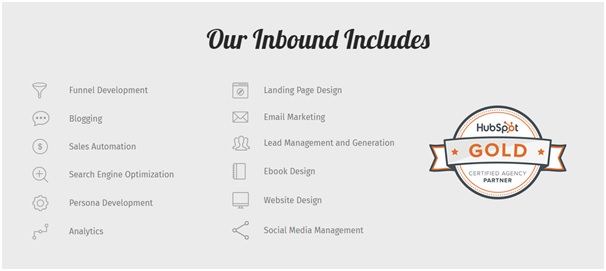
Or, if you are an expert in increasing sales, for example, you can use Conversion XL’s certification.
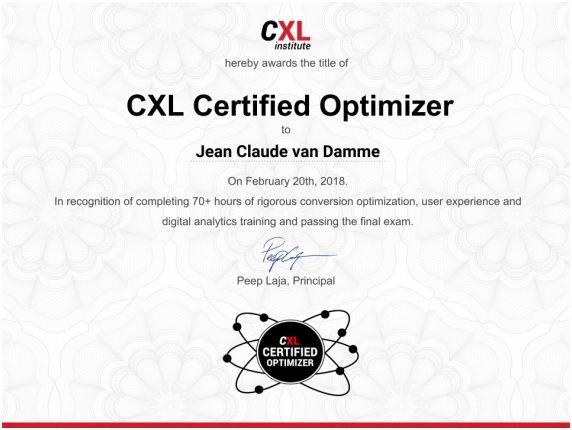
Think of the doctor’s uniform: would you recognize him without it? So, figure out an outfit that draws attention and may associate you with an expert.
Accessories that go along with certain positions/roles (e.g., police badges, religious robes, rosaries, expensive suits, nice cars, etc.)
But these are not the only things you can do to boost your authority.
You can also ask other influential people (who already are an authority in their field) to give you a great review.
Here’s how Brian Dean from Backlinko does it:
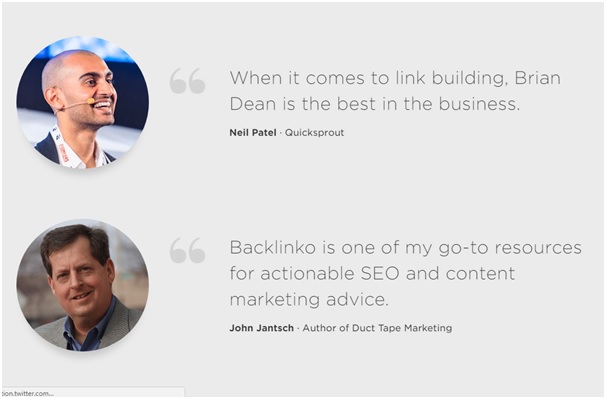
People seem to be more motivated by the thought of losing something than by the thought of gaining something of equal value.
For instance, homeowners told how much money they could lose from inadequate insulation are more likely to insulate their homes than those told how much money they could save.
There are many theories as to why this was the case.
For one, scarcity may signal something about the product. If there is less of an item, the thinking goes, it might be because other people know something you don’t.
Another theory goes back to our evolution. When food was scarce, it was a danger to die. So now, scarcity is a trigger to our brain to act in a certain way.
There are 2 common ways you can use this:
Example - If you sell a course...
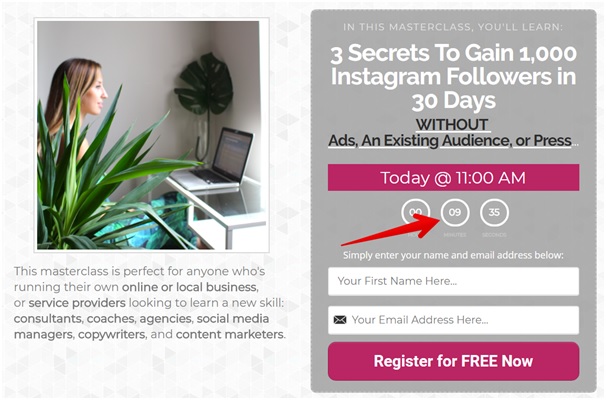
You can pinpoint the number of hours left until the sign-up for your course closes.
Example - Free webinar
You can say that there are 100 limited spots because that’s how much the platform supports. There’s nothing wrong in telling the truth.
Example - if you’re a coach/consultant and you need new clients
You can create a limited offer BOTH in time and quantity. You can offer a certain bonus to the first 3 customers.
You can justify this offer by the fact that there are only so many customers you can tackle at once, so the first come, the first served.
Note: never use fake scarcity because your site visitors will see right through you!
For example, don’t say you have a limited amount of free e-books. It’s not like you have a limited number of pixels on your screen or anything like that, right? :)
In 1987, social scientist Anthony Greenwald approached potential voters on election day eve to ask whether they would vote and to provide reasons why or why not. 100% said they would vote.
On election day, 86.7% of those asked went to the polls compared to 61.5% of those who were not asked.
Those who publicly committed to voting on the previous day proved more likely actually to vote.
The point is this:
People do not like to back out of deals. Cialdini says we’re more likely to do something after we’ve agreed to it verbally or in writing. People strive for consistency in their commitments. They also prefer to follow pre-existing attitudes, values and actions.
Dr. Cialdini explains that once we have made a choice or taken a stand, we will encounter personal and interpersonal pressures to behave consistently with that commitment.
Those pressures will cause us to respond in ways that justify our earlier decisions.
Ask people to take a small step by downloading something free that could help them solve a particular problem.
You’re probably thinking that almost everyone does that now. And you are right. But the truth is, few people do it right.
If you want this to work, you must give people something SPECIFIC/ACTIONABLE and VERY USEFUL so they immediately feel that you’ve helped them.
New Rock City organized an online contest where they encouraged their potential customers to self-identify as fans of the brand.
This kind of technique creates a valuable opportunity for you to follow up with offers that remind them of their fandom.
For example: “Since we all know that you’re such a fan, surely you wouldn’t want to miss out on these wonderful deals and offers?”
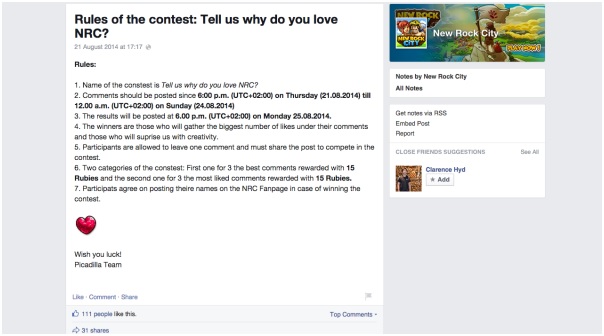
Whenever you want to apply this principle, think of McDonald’s.
They lure you in with some bargain prices for a certain (daily) menu.
But few people know that they barely make any money from that.
Instead, the way they make money is by upselling you with a bigger menu, they offer you a juice or some fries or an ice-cream next to your cheeseburger.
These are some simple principles. But very powerful. They influence me, you and all human beings, even if we are aware of them.
They are just that powerful.
So, what I recommend you to do next,
… is make a short list of these principles and start observing them around you every day.
Once you are aware of them, you will use them effectively in your business to turn your potential clients into actual customers.
You’ll also receive some of our best posts today

Patrik Bindea is a growth hacking marketer and the owner of strodin, where he helps dentists get more patients. He obsessively tests everything until he finds those details that turn strategies, concepts and words into sales.
Featured images are a significant but underestimated part of...
Don't you want your e-commerce site to be highly...

User reviews are a game-changer for e-commerce. Consumers rely heavily o...
Don’t miss the new articles!